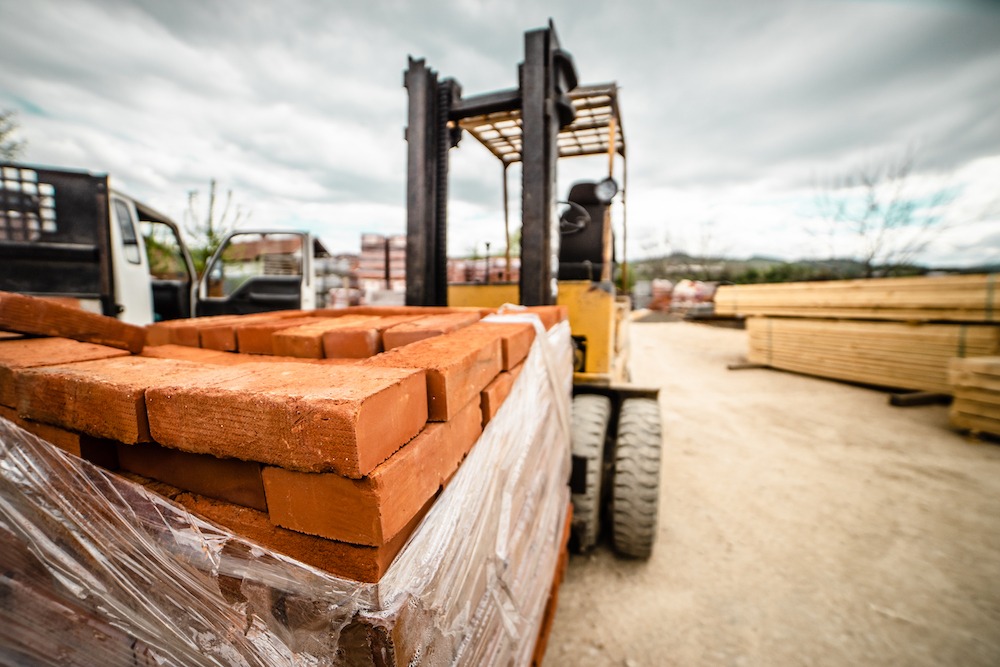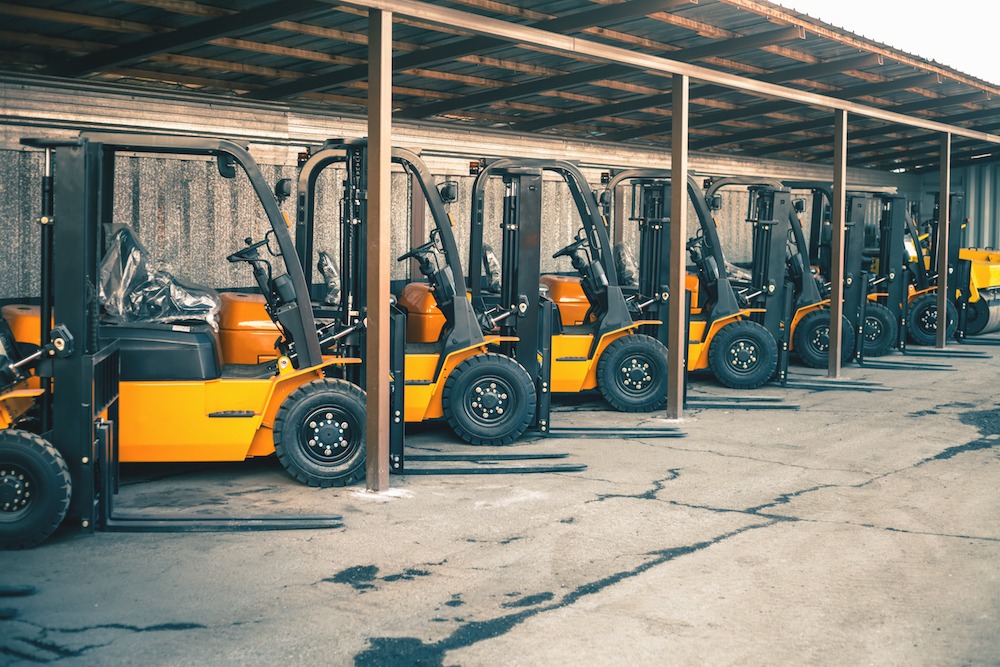Words: Derrick Hackett
Photos: Miljan Živković, Pilin_Petunyia
“How am I going to get that large stone from my trailer to the top of that stoop?” I remember that exact question plagued me while during a project that required removing an old brick stoop. The stoop was in terrible condition from where the rain had pounded it over the years. The entire top landing, along with three steps was destroyed from water damage and the freeze and thaw cycle that ravages upstate New York. Removing the stoop didn’t prove to be that difficult.
Most of the brick could be removed by hand. Most of the time, diverting water can prevent damage like this. In this instance, the main roof’s eave was right above the stoop and lacked protection from necessary gutters. Salt is also a significant factor in this area. Unfortunately, homeowners are misinformed and apply salt liberally to masonry during the winter to prevent ice buildup. The result, the homeowner ends up with a masonry structure showing signs of wear and in need of repair. These repairs can be extensive and require more than just the lifting power of one mason.
I could not salvage any of the brick, so I loaded them up and recycled them as clean fill. After a bit of research, I was able to locate some Drury brick in the rubble pile that once was officers’ barracks on a now-abandoned air force base. I loaded the brick by hand and soon rebuilt the stoop to the same dimensions as its original design. Conversely, I did adapt the three treads and landing going with granite cut from a local quarry. The three treads were manageable at 14″x63″x1.5″. However, the landing cap at 63″x61.5″x1.5″ seemed a daunting lifting task that would require something more.
I arrived at the quarry early in the morning and watched as the quarry worker meticulously loaded all four stones onto my trailer using a front-end loader with a set of forks bolted to the bucket. As I watched, I mulled over the fact that I did not have a piece of equipment on my job site to maneuver such a larger piece of granite. As I traveled back to my job site, I brainstormed ways to move the granite from my trailer to the landing while laying it carefully onto a bed joint.
As luck would have it, approximately five miles down the road was my masonry supplier. I immediately reached out to one of the employees I work with on a regular basis. I asked him if, by chance, one of his truck drivers might happen to drive by my job site and if so, might they be able to use their piggyback forklift. Without hesitation, the employee offered me assistance. He dispatched his driver and got back to me with an estimated time of arrival. About 20 minutes later, I could see the driver navigating the winding driveway with the much-needed forklift. As he jumped out, I met with a smile, and we assessed the uneven terrain and massive granite piece that needed to be transported. The driver looked around and simply said, “No problem.” Hail to the power of the forks!
He walked over to his truck, and he removed the forklift from the back, which only took seconds. I couldn’t help to watch in awe of how to mean this machine looked for a forklift. The machine was simply incredible. It had three all-terrain tires that looked like they could trek over any terrain. Its mass was due to a close distribution of height to width. There was no doubt this little beast was up to the task. The driver approached the stone with extreme care and proceeded to lift it under my guidance. Fortunately, the driver was able to lift the granite piece high enough for me to clean the bottom and apply a bonding agent before setting it.
The driver, with the help of his forks, was also able to suspend the stone slab above the stoop while I applied the bonding agent to the stoop-landing base along with a bed joint of mortar. We carefully worked together as we set the slab perfectly onto the top of the newly constructed brick stoop. The slab looked incredible over the brick with its proper pitch and overhang. The driver was a complete pro. I compensated the driver for his time and felt satisfied that the job was done with perfection and the help of the forks.

In this business, forklifts or a machine with forks play an important role in our day-to-day operations. I would not be able to spend hours at a supplier’s hand loading my materials and then travel to my jobsite to unload the same material by hand. This laborious task would require hiring employees to simply move material, which isn’t feasible, nor good business. Instead, I pull up to my suppliers, and they load my trailer for me with the aid of their irreplaceable forks. In turn, when I arrive at my jobsite, we remove the pallets with a skid steer donning the versatile forks. Looking back, the Pennsylvania Railroad Company introduced battery powered platform trucks to move luggage in 1906. During that time, they had the ability to transport goods or materials by pushcarts. The battery-operated pushcarts were cutting edge. At the same time, elevators were coming into existence. If only the two ingenuities could work together?
Although the forklift inventor is unknown, much credit goes to the Clark Company for inventing the forklift in 1917. It wasn’t until the late 1930s the hydraulic-powered forklift was developed. During this time, the use of standardized pallets helped increase the forklift truck’s popularity. The forklift truck was big and bulky and soon needed revisions to make it more compact and user-friendly. The industry needed something more useful in close quarters. In 1954, there was a British company, Lansing Bagnall that developed the first narrow aisle electric reach truck. As these innovations progressed, including lifting heavier loads at greater capacities, operator safety became critical. Finally, the industry was able to provide forklift capabilities that were powerful and safe, thus revolutionizing lifting capabilities.
The life of the forklift continued to progress in the 1980s with increased safety features and comfort amenities. With new designs came increased productivity as well. The forklift quickly became a necessity for building, manufacturing, transportation, and warehouse industries. Now in modern-day, it would be impossible to imagine a life without the coveted forklift. The modern-day forklift has evolved into many forms. One such form is the pallet jack. This particular rendition is hand operated by one individual. Without this one advancement, it would be a long night at the grocery store for those responsible for stocking the shelves. The amount of manpower a forklift can replicate is unsurpassed and irreplaceable.
With all of its ingenuity and fortitude, it is important to understand the equipment before trying to operate it. When learning how to operate a forklift, one should try practicing with non-valuable items. Empty boxes on a pallet are always a good place to start. Unfortunately, I have seen people in this business fooling around with a forklift and ending up seriously injured. These machines demand a certain level of respect. One should always know his/her maximum lifting capacity when operating a forklift. More importantly, the operator should be aware of his/her surroundings when moving items with a forklift. Keeping the items low until you are ready to raise the lift is an essential safety tip. Operators can lose the entire skid, which can be life-threatening at ten feet in the air. Keeping the skid low will prevent the load from shifting, which is almost impossible to recover while suspended in the air. Losing a skid a few feet from the ground is more manageable and less dangerous to the safety of others.
I have been in the masonry business for more than 23 years now, and I have seen huge gains in the forklift industry and its impact on many other industries that benefit from its capabilities. Today, most machines have a set of forks. Tractors, skid steers, excavators, and loaders either come equipped or have the attachments necessary to transform them. The forklift attachments most likely are top sellers, given the efficiency and manpower they add to any job. In my field, I show up to my jobsites, and we remove the skids with the ease of a tractor and forks. Forks and forklifts are significant to the masonry world and to increase productivity. I cannot see it losing its place anytime soon…long live the forklift!
